EEG-Now : EEG-Now Makes 24/7 Stat EEG Possible
EEG-Now is a disposable sensor array, that when coupled with any EEG recording instrument, provides 24/7 stat EEG.
Gainesville, Fl., FL United States Diagnostics Hospital Solutions Neurology Equity RaiseAbout our project
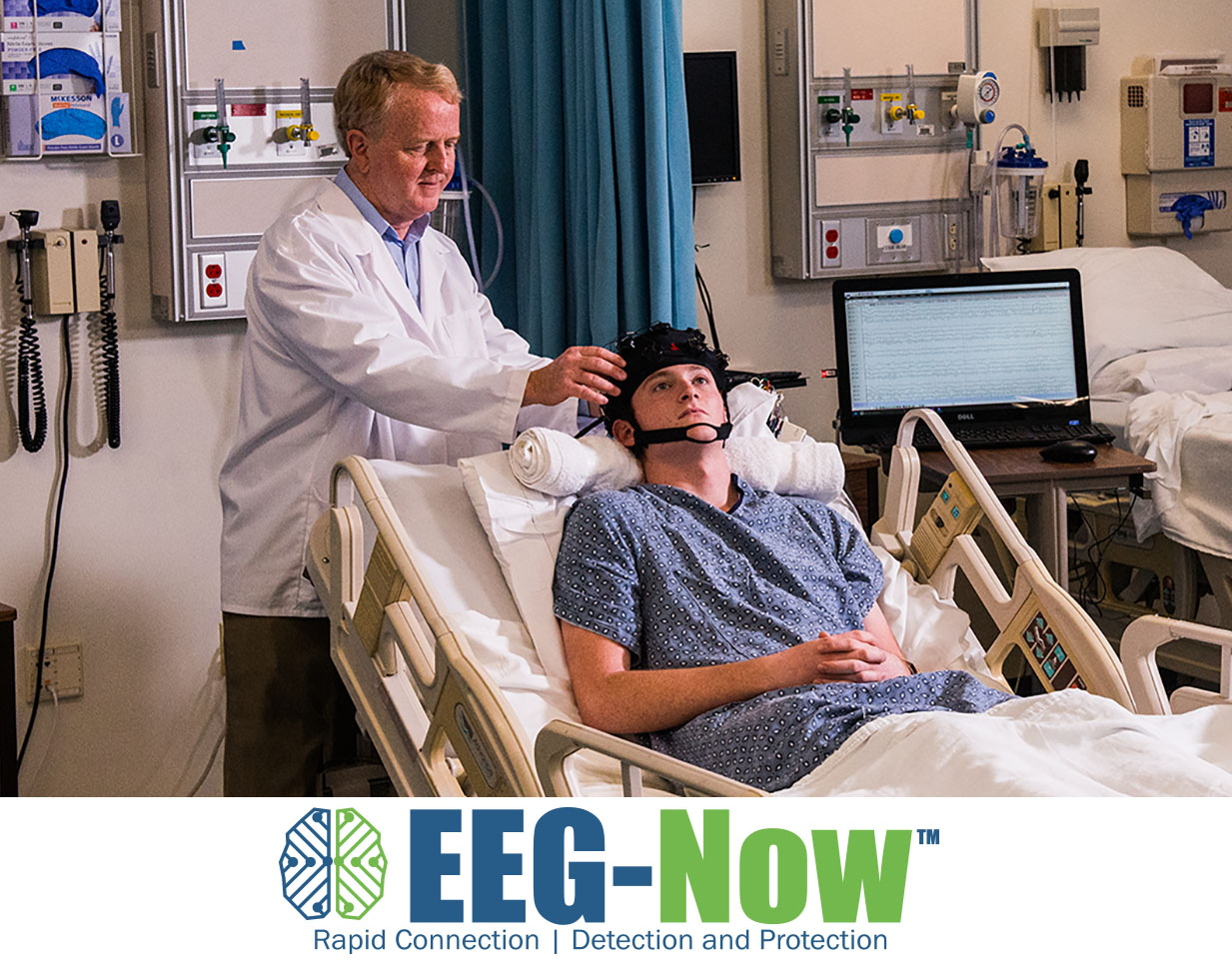
The problem we solve: 85% of patients who need an EEG are NOT given one. Traditional EEGs take too long to set up. There is a critical shortage of EEG technicians. Technicians are often not available particularly on weekends and evenings.
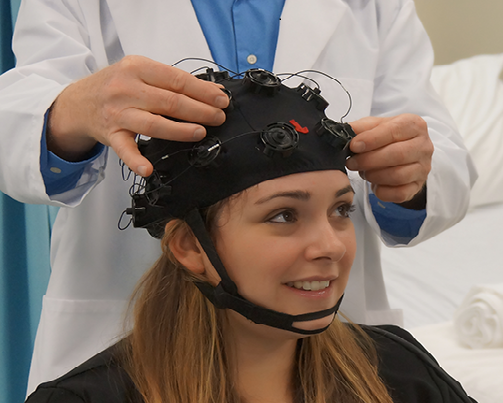
About our solution: EEG-Now™ allows any healthcare professional to perform EEGs rapidly at any location at any time without prior training. This provides immediate access to diagnostic technology that is known to be powerful, accurate and inexpensive.
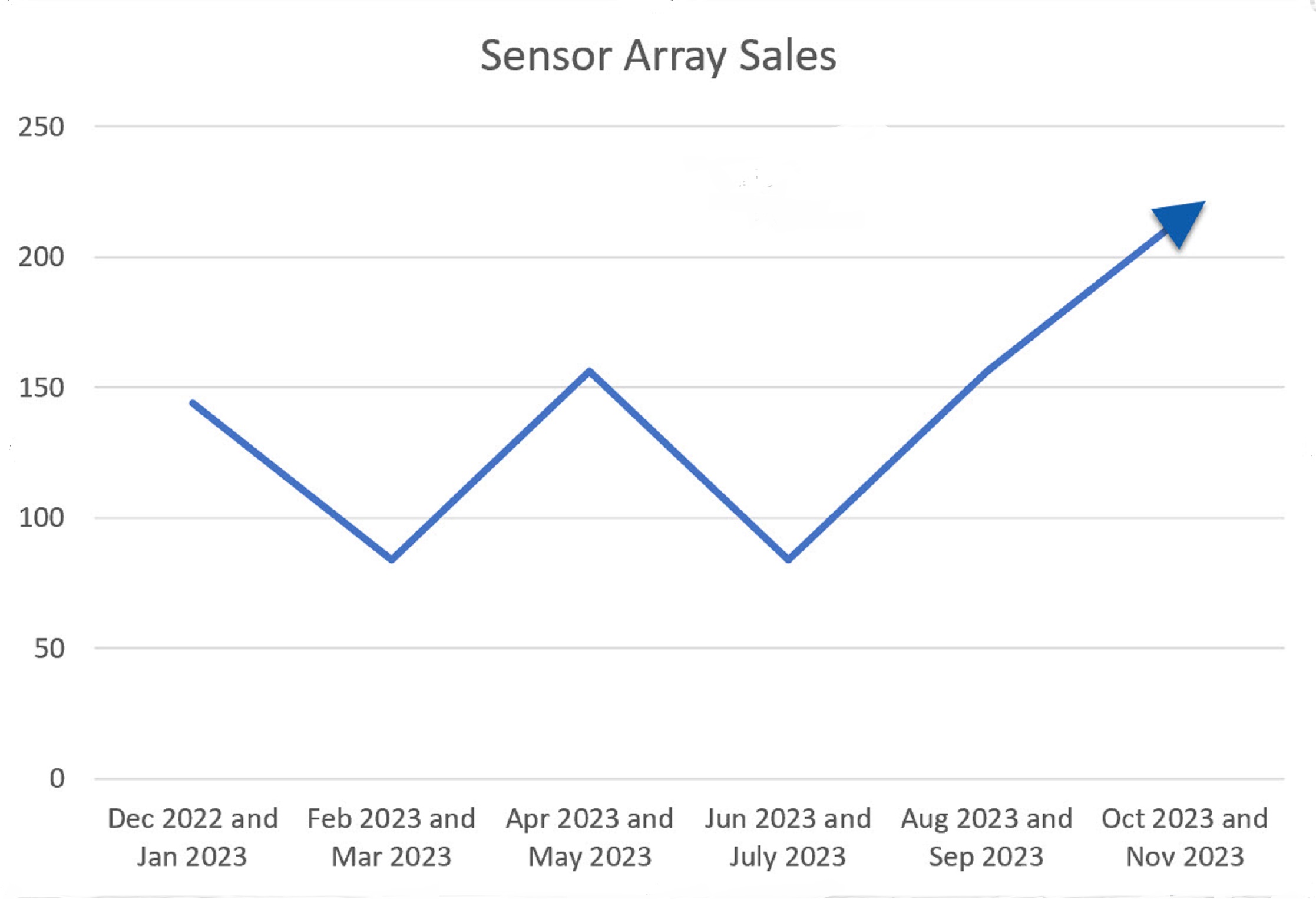
Progress to date:
EEG-Now is a patent protected FDA cleared medical device that meets an urgent clinical need in the hospitals of the US. Over 3000 units have been sold in hospitals across the US. The EEG-Now product has been very well received by our customers who remain very loyal. Some of our customers have been using the product for over 3 years. In the last 4 months our monthly sales have tripled and we expect this growth to continue to accelerate rapidly. We have marketing relationships with both a neuro-telehealth company and an EEG instrument manufacturer/service provider.
We are seeking investment to allow us to scale up to meet this increased demand. Investment would primarily be used for inventory and new tooling. EEG-Now also has great strategic value for EEG instrument makers. Because of the critical shortage of EEG technologists throughout the US, sales of EEG instruments in the ICU and ER are limited. EEG now solves this manpower shortage allowing for 24/7 EEG to be done in the ER and ICU. This allows equipment manufactures to sell many more instruments in these locations.
Here is a training video link demonstrating the ease of use of the EEG-Now sensor array: https://www.eeg-now.com/training
About Our Team

Creator: Scott Bearden
Location: Florida
Bio: Scott Bearden, R. EEG/EP T., CNIM, CLTM, Chief Technical Officer • Former Technical Director of the Epilepsy Center of Excellence VA Medical Center Gainesville, Florida • Former President of Quality Neuromonitoring Inc. for 10 years • 30 years experience in all aspects of EEG recording, teaching, and waveform analysis • Former Associate Editor of the Neurodiagnostic Journal
Title: Chief Technical Officer
Advanced Degree(s): BA University of Mississippi, R. EEG/EP T., CNIM, CLTM
About Team Members
Chris Sackalleres
President, MD
Biography: J. Chris Sackalleres, M.D., President
Neurologist with special expertise in epilepsy and Clinical Neurophysiology
Director of Clinical Neurophysiology Laboratory and Gainesville VA Epilepsy Center of Excellence, Malcolm Randall VAMC
Co-founder NeuroVista, Seattle, WA and Optima Neuroscience, Alachua, FL
Title: President
Advanced Degree(s): MD
LinkedIn:
https://www.linkedin.com/in/chris-sackellares-967a0921/
Richard Allen
CEO, BS, BA
Biography: Richard Allen, CEO
Co-Founder of Xhale, a medical technology spin-out from the University of Florida with technologies in patient monitoring, drug monitoring and pharmaceuticals.
Co-Founder of Axogen, OrthoHelix, Viewray, Chaologix, Optima Neuroscience, and BluAzu.
Founder and Managing Director of venture group Synogen.
Title: CEO
Advanced Degree(s): BS, BA
LinkedIn:
https://www.linkedin.com/in/rallensynogen/
Panagote Pardalos
Chief Scientific Officer, PhD
Biography: Panagote Pardalos, PhD, Chief Scientific Officer
Distinguished Professor in Systems and Industrial Engineering and Biomedical Engineering at the University of Florida
Co-Director Center for Applied Optimization at the University of Florida
Title: Chief Scientific Officer
Advanced Degree(s): PhD
LinkedIn:
https://www.linkedin.com/in/panos-pardalos-933b54a/
Jon Kurtz
Chief Financial Officer, BS
Biography: Founder and Retired CEO and President Alarian Bank
Real Estate Investor/Developer
Chairperson Marion County Hospital District
Title: Chief Financial Officer
Advanced Degree(s): BS
LinkedIn:
https://www.linkedin.com/in/jon-kurtz-40a1b421/
About Our Company
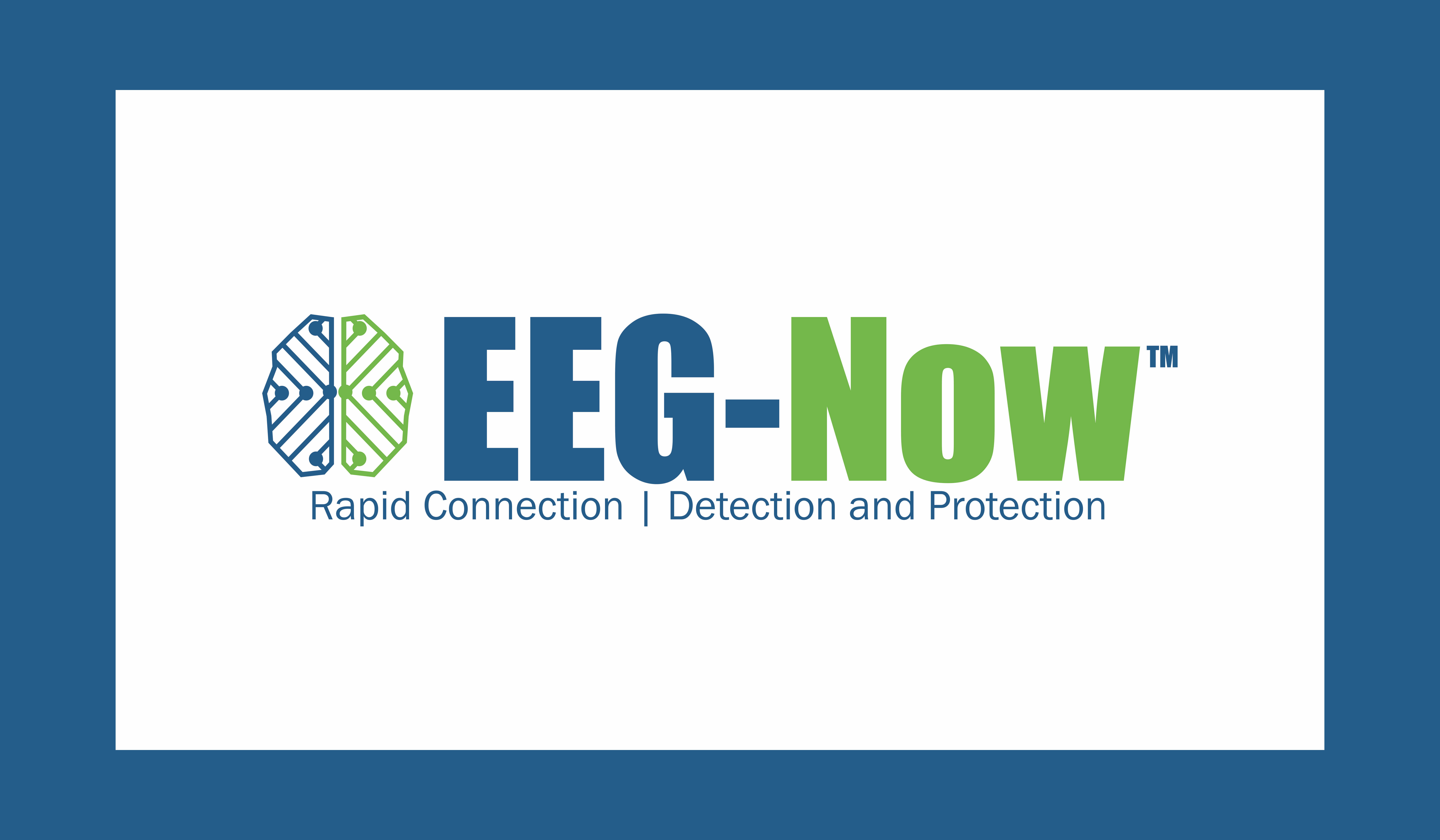
Encephalodynamics Incorporated, DBA EEG-Now
Location: 4432 NW 23rd Ave.
Suite 1
Gainesville, Fl., FL 32606
US
Founded: 2012
Website: https://www.eeg-now.com/
Facebook: https://www.facebook.com/profile.php?id=100057261977090
Other link: https://www.eeg-now.com/eeg-simplified
Other link: https://www.eeg-now.com/eeg-simplified
Product Stage: In the Market
Employees: 5-10
How We Help Patients
EEG testing has been in use throughout the US since the 1960's. Because EEG measures brain electrical activity, it is able to identify and monitor the excitatory neuronal discharges associated with eplileptic seizures. No other test can do this because they do not monitor electrical brain activity. Structural imaging tests such as MRI look at brain structures but not electrical function. EEG testing has historically been used on scheduled outpatients presenting to the EEG lab after referral from Neurologists or their Primary Doctors for concerning episodes which might be epileptic seizures. Rural hospitals or smaller hospitals throughout the US are often unablel to provide EEG lab services due to cost considerations. EEG-Now can help fill this gap by allowing onsite personnel such as nurses to do EEG testing in these locations in a more cost effective manner. This benefits patients in these locations. More commonly, EEG-Now is used in larger hospitals to fill gaps in EEG testing coverage 24/7. Roughly 20 million patients present to US hospitals each year with altered mental status which can be the result of brain electrical seizure activity. Most often the electrical seizure activity doesn't cause obvious twitching and jerking seen with clinical seizures and are called non-convulsive seizures. Multiple non-convulsive seizures can cause irreversable brain injury and contribute to death. EEG is the only test available to detect this electrical seizure activity. Once detected, the EEG continues to be monitored while patients receive various combinations of anti-convulsive medications. The effectiveness of the drugs in stopping their seizures is only know because EEG monitoring is ongoing. Thus, any patient presenting to the hospital with non-convulsive seizures greatly benefits from having stat 24/7 EEG coverage available which EEG-Now helps to faciltate.
How We Help Physicians
Within the last 20 years, there has been a widespread understanding that non-convulsive seizures which are only detected by EEG testing are common in patients in hospitals. Left undetected, these non-convulsive seizures can cause brain injury and contribute to death. Thus ICU physicians, ER physicians, and Neurologists are all desperate to have 24/7 EEG testing coverage. However, the pratical limitations involved in providing 24/7 EEG coverage make this difficult to achieve. There is a critical shortage of EEG technologists available after hours to provide these services and even if available, cost is very high for the hospital. These physician providers are embracing easy to use EEG recording sensor arrays such as EEG-Now. This allows them to use onsite hospital staff such as nurses or respiratory technologists to get EEG recordings to check their patients for non-convulsive seizures 24/7. The providers are happy to have better outcomes for their patients and reduce the need for transfer of patients to larger hospitals for EEG testing, while at the same time enhancing hospital revenues.
Neurologists who run hospital EEG laboratories are using EEG-Now to provide after-hours and weekend EEG coverage. This spares them from having to find and retain scarce EEG technologists who do not want to work night and weekend shifts. EEG-Now reduces valuable EEG technologist burnout and increases retention of these valuable professionals.
How We Help Hospitals
Hospital administrators are under pressure from physican providers in the ER, ICU, and Neurology Departments to provide 24/7 EEG coverage for their patients to prevent adverse outcomes. Hospitals can use EEG-Now to fill gaps in EEG testing coverage 24/7. This enables them to provide first-rate patient care service because they are able to detect non-convulsive seizures which contribute to adverse patient outcomes. Early identification of non-convulsive seizures has been shown to increase the efficacy of anti-convulsive treatment of these seizures. This has been shown to decrease hospital complications and the need for transfer to larger hospitals with 24/7 EEG technologist coverage.
Hospitals are happy to learn that they can improve their patient outcomes with EEG-Now while also enhancing revenues. Medicare reimbursement rates for routine 25 minute EEG's are about $400. Longer duration recordings pay much more. Since the EEG-Now Sensor Arrays only const $165 per patient, this service is a revenue enhancer as soon as it is initiated.
How We Help Partners
EEG-Now has identified 2 areas where marketing partnerships have been established. Both of these partnership avenues provide a synergistic mutual benefit to EEG-Now and the companies involved.
EEG recorder instrument company
The first partnership avenue is with any EEG recorder instrument company. These companies sell multiple EEG standalone recording units to hospitals across the US. A typical mid-size hospital will have a couple of these recorders in a space designated as an EEG laboratory where scheduled out-patient EEGs are done along with in-patient EEGs that can be done with patients moved to the laboratory. Most mid-sized hospitals will also have 1 or more portable EEG recorder units on a movable cart. These units are typically taken to ICU or ER units to do EEG recordings on patients that cannot be moved. The more EEGs that are done in the ER and ICU units, the more portable EEG recording systems will be needed. However, for most hospitals, a shortage of EEG techs after hours and on weekends, severely limits the number of tests that can be done in these locations. This is where EEG-Now comes in to fill this gap. By using EEG-Now, hospitals can do many more EEGs after hours in these locations because EEG techs are not needed. Onsite nurses in the ICU and ER can apply the EEG-Now sensor array cap in a few minutes which duplicates the 25 minute effort an EEG tech would need to prepare to do a recording. Because more EEGs now can be done in the ER and ICU locations, more EEG recorders need to be purchased and left in these locations. Hence EEG-Now makes possible many more EEG recorder sales for EEG instrument companies.
Instrument companies partnering with EEG-Now have a competitive advantage when they approach new hospital customers because they can satisfy the hospital's need for after-hours EEG.
TeleNeurology Consultation
The second marketing partnership avenue is with any companies doing TeleNeurology consultation. Since Covid, TeleNeurology has rapidly expanded across the US. These companies provide 24/7 stat Neurology consultations via the internet to hospitals who do not have such Neurology capabilities. These Neurology consultations are required for a wide range of acute Neurological problems encountered in hospitals including epileptic seizures. In fact, any patient in a hospital who presents with confusion or altered mental status may be having non-convulsive seizures. These seizures can only be diagosed with EEG which records the electrical discharges responsible for the seizures. They are described as non-convulsive because no obvious twitching or jerking associated with clinical seizures is seen. TeleNeurology companies offer EEG interpretation as part of their services (since Neurologists read EEGs). EEG-Now allows the ER and the ICU to get many more needed EEG recordings done stat 24/7. As part of their Neurology consultation, these TeleNeurology doctors can now do many more stat EEG interpretations for their hospital clients. Hence partnering with EEG-Now offers a Tele-Neurology service a competitve advantage in their marketplace.
We would not be surprised if these strategic advantages to either EEG recorder instrument companies or TeleNeurology companies might result in an offer to acquire EEG-Now to give them an exclusive strategic advantage in their marketplace.
Innovation Details
Intellectual Property Summary
The EEG-Now sensor array has received utility patent protection, Patent No: US 10,893,821 B2 effective January 19, 2021. This patent protection is strong due to many unique features incorporated into the EEG-Now design. In addition to the patent protection, there are many elements in the sensor array that have been precisely dialed in for optimal performance. These elements are very difficult to independently replicate.
Patent Link
https://image-ppubs.uspto.gov/dirsearch-public/print/downloadPdf/10893821
Clinical Information
Summary: Below is a final closeout report for a SBIR Phase I study done by EEG novices utilizing the EEG-Now sensory array cap and a handheld EEG recorder. The initial recording was followed directly by an EEG recorded by an professional EEG technician. Independent EEG blinded expert review of all recordings ascertained that interpretability of recordings done by novice use of EEG-Now was statistically equivalent to subsequent recordings done by EEG technicians. This study validates the clinical quality of EEG's done by medical professionals with no EEG training using the EEG-Now sensor array.
FINAL CLOSEOUT REPORT
Project Title: BrainView*- A Novel EEG System for Use Anywhere by non-EEG Caregivers (SBIR Phase I - 1R43NS110341-01)
Institution: Optima Neuroscience, Inc. Principal Investigator: Ryan T. Kern, M.D.
Co-Investigators: Kevin M. Kelly, M.D., Ph.D., J. Chris Sackellares, M.D., Deng-Shan Shiau, Ph.D.
Project Period: 05/15/2019 - 07/14/2020
*BrainView was a research tool consisting of EEG-Now electrode array cap connected to
. the Cerescope handheld EEG recorder.
Specific Aims
Specific Aim 1: Demonstrate that novice (non-EEG-trained) personnel at a health care facility can set up and record technically satisfactory acute EEGs (10-15 minutes) using the BrainView system.
The plan was to identify a total of 76 subjects from the Epilepsy and General Neurology Clinics of Allegheny General Hospital (AGH, Site Pl: Kevin Kelly, M.D., Ph.D.) who required a standard outpatient EEG study. Many of the patients in these clinics have longstanding epileptic encephalopathies or other brain disorders and are expected to exhibit abnormal EEG patterns (slowing, epileptiform discharges) during the trial and therefore afford the best opportunity to record and detect these critical EEG patterns accurately. Dr. Kelly's dedicated research coordinator, Ms. Teresa Hentosz, performed all patient recruiting, consenting, and other administrative research-related procedures.
The goal was to demonstrate that (1) non-EEG-trained health care personnel (novices) can set up BrainView and start the recording in 5 minutes; and (2) the BrainView recording by a novice has EEG signal quality that is sufficient for clinical interpretation.
Study Outcome Reports
- BrainView setup time by novices
The research team successfully recruited 38 "EEG novices" from AGH health care workers, including fellows, residents, PAs, supervisors, (non-EEG) technicians, researchers, nurses, and secretaries to conduct BrainView EEG recordings on 38 patients admitted to AGH Epilepsy and Neurological Services. The range of time for setting up a Brain View EEG recording was between 1.48 and 4.88 minutes, with the mean length = 3.16 minutes (SD = 0.76; median = 3.06). Based on the Shapiro-Wilk normality test, the distribution of the setup time length cannot be rejected as norm--- ally distributed (p= 0.975).
The outcome from these data strongly supported the hypothesis that the time duration required for a novice to set up BrainView EEG recording, including tasks of properly putting EEG-Now on patient's scalp, connecting EEG-Now with CereScope, confirming acceptable electrode impedances, and initiating the recording process is less than 5 minutes (p < 0.001).
- Distribution of SrainView Setup Time by Novices
- BrainView EEG signal quality (by novices) is acceptable for clinical interpretation
EEG recordings from 38 patients were obtained for this part of the investigation. Each patient had two EEG recordings: the first on BrainView system by a novice and the second on Natus system by an EEG technician. These 76 EEG files were sent to an independent EEG expert for review to determine for each EEG recording whether the signal quality is sufficient for clinical interpretation. The filenames of these 76 EEG recordings were randomized so that the independent EEG reviewer was blinded with regard to the recording system (BrainView vs. Natus) as well as to the subject. Hence, even though each subject had a pair of EEG recordings, it is reasonable to assume that the outcomes on these 76 EEG recordings are independent each other. Table 1 summarizes the outcome from the expert's review.
Table 1: Expert's review on clinical interpretability of BrainView and Natus EEG recordings
|
|
|
BrainView |
|
|
|
. |
|
Interpretable |
Not Interpretable |
Total |
|
Natus |
Interpretable |
27 |
5 |
32 |
|
Not Interpretable |
6 |
0 |
6 |
|
|
|
Total |
33 |
5 |
38 |
Reviews based on the independent EEG expert suggest that the percentage of BrainView EEG recordings that are clinically interpretable is 33/38 = 86.8% (95% C.I. = [72%, 96%]), whereas the percentage of Natus EEG recordings that are clinically interpretable is 32/38 = 84.2% (95% C.I. = [69%, 94%]). Statistically, the clinical interpretability of BrainView recordings by novices was not different from that of Natus recordings by EEG technicians
Regulatory Status
EEG-Now received FDA clearance for clinical use on 05/18/2018. Below is a link
https://www.accessdata.fda.gov/scripts/cdrh/cfdocs/cfpmn/pmn.cfm?ID=K180524
Press Release:
EncephaloDynamics Receives FDA Clearance On Its Advanced EEG Sensor Array Cap – EEG-Now
Gainesville, FL – May 21, 2018 - EncephaloDynamics, Inc. announced today that the U.S. Food and Drug Administration (FDA) has cleared the company to market EEG-Now™, an advanced product for EEG acquisition that takes only minutes to apply. The EEG-Now™ sensor array cap is designed for use in the ER, ICU and OR, to enable easy placement of an entire set of 21 EEG leads on the head in just a few minutes. The EEG-Now™ cap allows an EEG recording to be started in approximately 3 minutes, by any capable staff member in the ER, ICU or OR, resulting in an interpretable EEG at the point of care, regardless of time or location. This important diagnostic tool could expand the number of patients who benefit annually from an EEG, from the current 3 million to the more than 17 million patients who could benefit from an EEG each year but do not receive one because of the difficulty of setup and lack of trained EEG technicians.
“Utilizing EEG-Now™, healthcare facilities can quickly perform an EEG recording to help diagnose various kinds of brain injuries including altered mental status, seizures, concussion, traumatic brain injury, stroke, epilepsy and other neurological disorders,” stated J. Chris Sackellares, M.D., President of EncephaloDynamics, Inc. “Fast diagnosis and interventions are crucial when time loss equals brain loss. For example, in the case of stroke, 1.9 million neurons are lost each minute in which stroke is untreated. Because EEG setup time is reduced from 20 to 25 minutes to around 3 minutes, EEG-Now™ will help to improve patient outcomes and prevent avoidable deaths.”
With 30 years of EEG recording experience, co-inventor and EncephaloDynamics Chief Technical Officer, Scott Bearden, R. EEG/EP T., CNIM, CLTM, was motivated to bring to market an EEG sensor array cap that would be easy for any healthcare professional to use. “I spent a majority of my career frustrated because I knew the power of an EEG in diagnostics, but I was limited by current EEG acquisition technology.” Mr. Bearden added, “But today I am proud to be a part of solving that problem. Our technology opens this critical diagnostic tool to millions of patients who need an EEG but could not get one due to the length of the procedure or the lack of trained technicians.”
Because of its easy application, the EEG-Now™ technology may also in the future help patients at the location of injury – even on the football field. “The EEG is a sensitive marker for even mild disturbances in brain function. But, some people have a clinically normal EEG as early as 15 minutes after a concussion,” states Dr. Sackellares. “Using EEG-Now™ on the sideline immediately after a suspected concussion would beat the 15-minute limitation and help to accurately diagnose a concussion.”
How we will use the funds raised
The anticipated use of funds is almost entirely targeted for a large production run to meet rapidly increasing sales. In addition new higher capacity tooling will be required. With increased sales and shipping some modest increases in cost for order fulfillment and shipping will be necessary.
Thank You
The leadership of EEG-Now is inviting you to join us in funding the rapid expansion of our medical device business. Much of the hard work needed to surmount difficult obstacles such as FDA Clearance, and Utility Patent Protection have already been achieved. The product has been on the market for 3 years and has a loyal customer base. We have reached an inflection point where sales are rapidly increasing with a threefold increase within the last month. The funding that you will help provide is needed to help facilitate larger production runs and tooling to meet our increased demand.
It's not often investors have the chance to help fund a business that has reached this point in its development while its market capitalization is still low enough for your investment to get a higher return. But EEG-Now is not just a good investment, it is literally a critically needed diagnostic tool that enables treatment that prevents patient brain injury and death.
EEG-Now was developed by a highly experienced Neurologist and EEG technologist who knew that critical 24/7 EEG testing was often not available after hours and on weekends across the US. This is due to a critical shortage of trained EEG technologists willing to work these shifts. EEG-Now fills this gap in coverage because it is so easy to apply that onsite nurses can use it with very little training. This is one of those rare win-win situations where hospitals can provide desperately needed EEG coverage while enhancing their revenues. The EEG-Now sensor array only costs $165.00 while Medicare reimbursement for a routine 25 minute EEG is about $400.00. Longer term recordings pay much more.
With our rapidly increasing sales and the fact that EEG-Now use in the ICU and the ER drives EEG recorder sales, we could very easily become the target of acquisition by these well financed EEG recorder instrument companies or other players in the field.
Come join us in this exciting opportunity to grow EEG-Now and help patients throughout the United States.
Investor Info
Market Size
Market Size = About 20.4 Million EEGs Needed (1) but Only 3 Million Are Done Each Year (2)
Just as EKG testing is the best test for heart function, EEG is the best test for brain function. EEG testing is by far and away the best test for patients with confusion (delirium) or seizures, showing abnormalities in 93% of them (3). There are about 20.4 million such patients in USA hospitals each year. EEG is the only test that is able to diagnose subtle seizures in the brain causing confusion. Untreated, such seizures act much like a smoldering electrical fire in the brain and can cause brain damage or death.
EEG testing is the only test to assist in diagnosing those patients with a new onset of seizure (150,000 each year) (4) or to follow the course of epilepsy (2.2million prevalence in US) (4).
EEG is useful for evaluation of confused patients after head trauma (2.5 million head trauma patients present to USA ERs every year) (5).
References
1. About 20.4 million EEGs needed per year in the U.S.
20.4 Million Breakdown
A. General hospital patients - rate of delirium - 35 million patients admitted to the hospital in the USA per year (American hospital association 2013). 5.7 are admitted to the ICU. 35 M - 5.7 M = Leaves 29.3 million general hospital patients. A large multinational European study found a rate of 9.1 % having delirium (Cited in Critical Care Clinics 2008; 24: page 658) 9.1% x 29.3M = 2.66 M need EEG
B. ICU patients - 5.7 million admitted each year (American Hospital Associations 2014 annual survey) Delirium present in 68.2% (American Geriatric Society 2006; 54:479-484) 68.2% x 5.7 M = 3.9 M need EEG
C. Emergency room patients - 130.4 million visits to the ER annually (ER national center for health stats national hospital medical care survey 2013. Emergency department summary table). Up to 10% of ER patients present with seizures or altered mental status (Clinical Neurophysiology 2012; 123:910-917). 10% x 130.4M = 13 M need EEG
D. Epileptic patients 2.2M prevalence in U.S. (reference #2) About 10% will have follow up EEGs each year or will have first seizures = 220,000 and about 600,000 EEGs done on patients with syncope or unexplained brief spells. 820,000 need EEG
Total per EEGs needed per year in the U.S. = about 20.4 million
2. 3 million current EEGs done per year U.S. No nationwide tallies keep. Personnel communication from Marc Nuer MD PhD who is the acknowledged USA expert on EEG
statistics and reimbursement coding. He extrapolated the 3 million number from existing Medicare/Medicaid statistics on EEG usage.
3. Academic Emergency Medicine 2014; 21:283-291
4. Epilepsy Foundation at epilepsy.com
5. Center for Disease Control and Prevention www.cdc.gov/traumaticbraininjury/get_the_facts.html
Projected 3 Year Growth
| Projected 2024 Total | Projected 2025 Total | Projected 2026 Total | |
| Sales | $544,050 | $2,827,775 | $13,386,907 |
| Production Cost | $295,945 | $1,415,061 | $6,642,917 |
| Gross Profit | $248,105 | $1,412,715 | $6,743,990 |
| Operating Cost | $92,780 | $554,674 | $2,162,798 |
| Net income (loss) | $155,325 | $858,041 | $4,581,192 |
One way to think of this is to look back to the 1960's in the US where patients with possible heart problems were only able to get an EKG test done by a trained EKG technologist who had to roll portable units to their location in the hospital. Today, virtually everyone coming into the ER has a routine scanning EKG ongoing during their time in the ER. Eventually, the same paradigm will occur with EEG where all patients in the ER and ICU with unexplained cognitive problems will be hooked up to scanning EEG tests immediately. EEG-Now technology will facilitate this. Once this level of penetration is reached, the market potential is in the hundreds of millions per year.
A large shorter term payout could easily come for investors if we are purchased by a large company that has strategic synergy with our product. These would include EEG instrument recorder companies who will have a competitive advantage if they bundle their recorders with the EEG-Now Sensor Array. This will enable many more EEGs to be done 24/7 in the ICU and the ER, thus massively increasing sales of recorder units in these locations. Likewise, Tele-Neurology companies can achieve competitve advantage by coupling EEG-Now enabled 24/7 EEG testing with their remote Neurology consultations. This allows for not only 24/7 stat EEG testing, but also 24/7 stat EEG reading.
In either of the above 2 scenarios, EEG-Now growth and increasing value will take place because our product meets a growing need for 24/7 EEG testing in the face of a declining EEG technologist workforce post-Covid.
Revenue Model
The EEG-Now product is sold to hospitals throughout the US to enable 24/7 EEG testing which these hospitals desperately need. We have also recently started servicing 2 new large hospital chains. We expect these chains to roll our product out to many of their hospitals. Our experience has been that when hospitals receive demo EEG-Now units and are able to try them, most become enthusiastic and loyal customers. Introduction of EEG-Now is not a hard sale to hospital administration because EEG-Now makes them money from the very first test done. This is because EEG testing reimbursements to hospitals are many times more than the cost of the EEG-Now Sensor Array.
EEG-Now overhead costs remain low which allows for a good profit margin.
Competitors
| Electrodes Supplied | # of Scalp Electrodes | No Scalp Prep Required | No Conductive Gel Required | Application Under 5 Min | Easy to Remove & Apply | Little Training Required | Disposable | Price | |
|---|---|---|---|---|---|---|---|---|---|
EEG-Now
|
Yes
|
19
|
Yes
|
Yes
|
Yes
|
Yes
|
Yes
|
Yes
|
$165
|
| Zeto | Yes | 19 | Yes | Yes | No | Yes | No | No | $25,000*** |
| Electro-Cap International | Yes | 19 | No | No | No | Yes | No | No | $360 |
| Corticare cap | Yes | 19 | No | No | No | Yes | No | Yes | $200 |
| Ceribell | Yes | 10* | Yes | No | Yes | Yes | No | Yes | $25,000** |
*ACNS Guidelines require a minimum of 16 channels, ** Includes recorder. Additional per use fee and cloud charges.
Traction
We have hit an inflection point with sales to customers. In November alone our sales have tripled over that of the average monthly sales in 2023. We now are now selling to 4 large hospital chains in the US. Our sales traction is very solid because once you achieve success in a hospital within a hospital chain, the rollout to other hospitals within the chain becomes very straightforward. An example of this is the Ochsner Health System based primarily in Louisiana. After securing their largest hospital in New Orleans, we have also expanded into three more of their hospitals throughout Louisiana.
Currently, we have been selling primarily through the widespread neurology connections of several of our founders. Recently, we also have added marketing partnerships with a Neuro-telehealth company and an EEG instrument maker/remote EEG Technologists company. We expect this to rapidly increase sales. As we expand, we will hire full-time sells people to further grow sales. The potential sales market is very large and growing due to a critical shortage of trained EEG Technologists post Covid that are available to provide 24/7 EEG testing.
Due Diligence Docs
Please note that access to the company's confidential materials is limited. Click this button to request access from the Company and its representatives.
Updates
No updates found .
Supporters
Help us find best new ideas to fund by telling us what you think. Your feedback goes straight to the team behind this project in private, so tell them what you really think.
0
Score
0
Score
0
Likes0
Partners0
Pilots1
Investors-
This campaign has ended but you can still get involved.See options below.
interest to date.
Help us find best new ideas to fund by telling us what you think. Your feedback goes straight to the team behind this project in private, so tell them what you really think.


